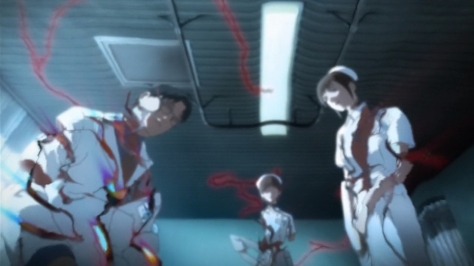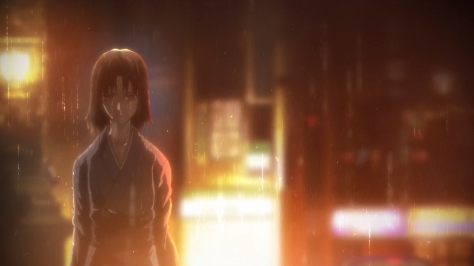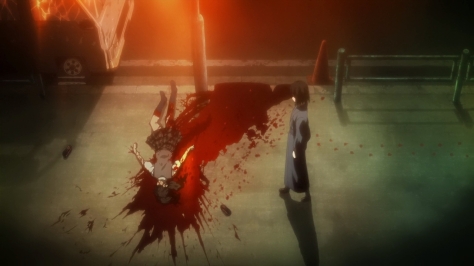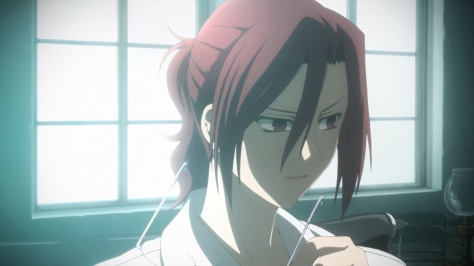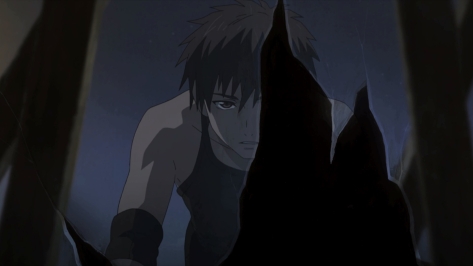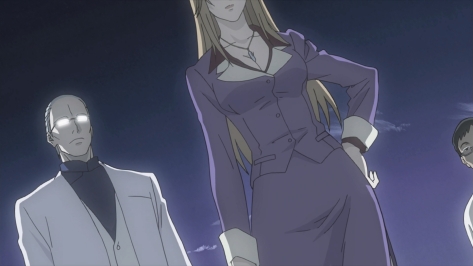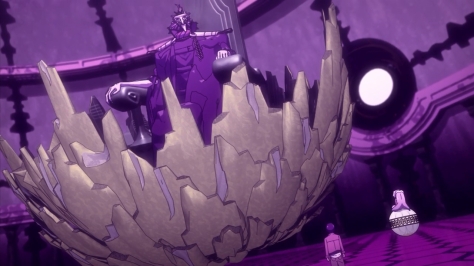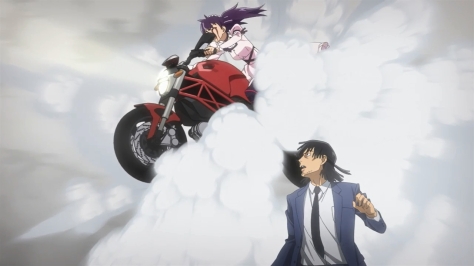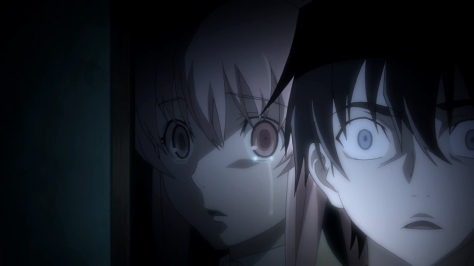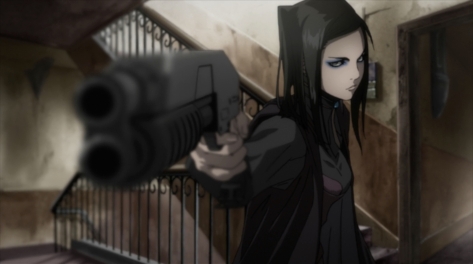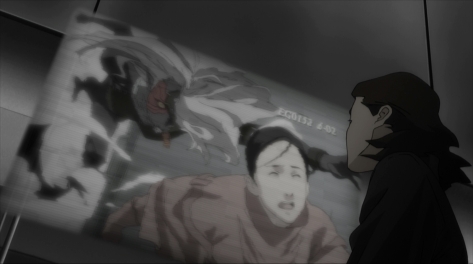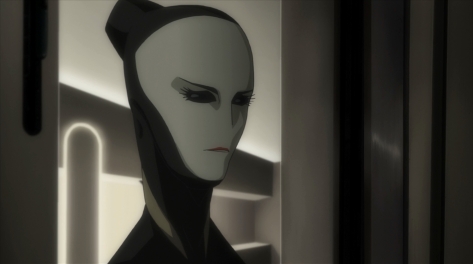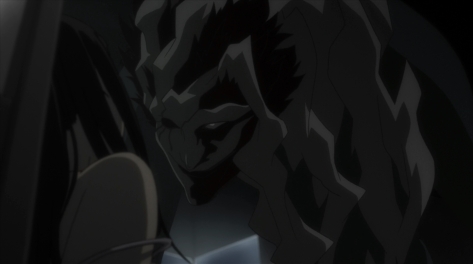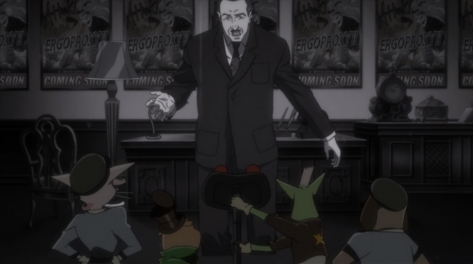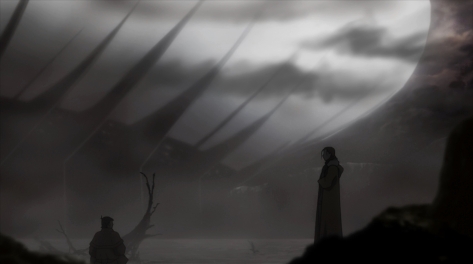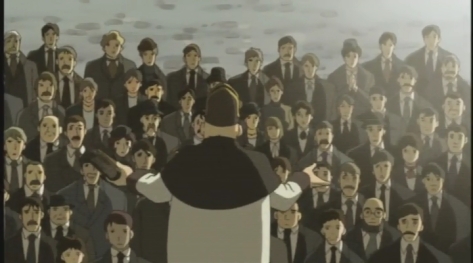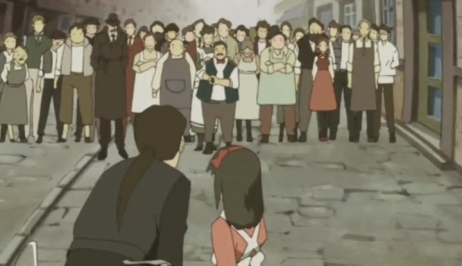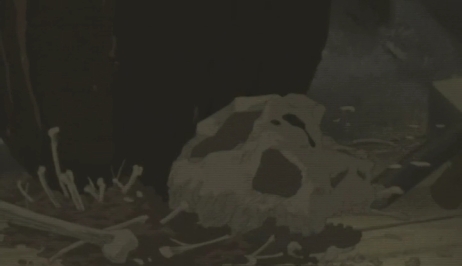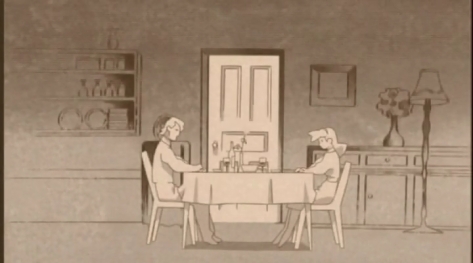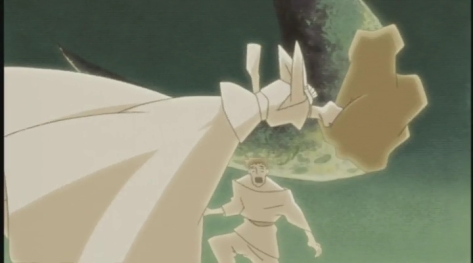Japanese Title: Kara no Kyoukai
Similar: Rin: Daughters of Mnemosyne
Watched in: Japanese
Genre: Supernatural Action Mystery Thriller
Length: 9 movies (35 min. to 2 hrs. each)
Positives:
- Beautiful environments.
- Fantastic soundtrack.
Negatives:
- Dead eyes syndrome.
- Atrocious editing and pacing.
- No one has a personality.
(Request an anime for review here.)
The Garden of Sinners is an unusual anime series. I’m not sure if you can refer to it as a series, in the standard sense, for it is nine movies of vastly varying length – 35 minutes to 2 hours long. Furthermore, the movies aren’t connected much beyond the main characters and subject matter. It’s akin to older British detective serials like Poirot, where little of the story carries from one episode to the next, which allows the audience to join any week in the series on TV without feeling lost.
Using this series structure, The Garden of Sinners tells of a detective agency that takes on cases involving the supernatural – spirits, curses, and the like. The agency has three members: the sorceress Touko, able to create human-like dolls, the ordinary human Kokutou, and part-doll protagonist Shiki. She has the “Mystic Eyes of Death Perception”, a power that allows her to see a target’s “lifelines” that will kill them when cut. (That’s how they deal with the supernatural entities.)
The first movie follows a string of suicides by schoolgirls all leaping from the same skyscraper set for demolishment. On paper, this is an interesting anime, just my sort of thing. I love contemporary supernatural stories and I am a ravenous consumer of detective serials. This should be a direct feed of serotonin to my brain injected via a syringe of intriguing mystery, complex characters, fascinating mysticism, and unpredictable story. The Garden of Sinners has none of that.
The most glaring issue is that none of these characters has a personality. This should come as no surprise from the same author who brought us the worse-than-Twilight of anime that is Fate/stay night. Shiki is, by intention, an emotionally repressed person. However, once again, like a bloody broken record, I must stress that emotionally repressed does not equate to zero personality, never mind the other characters who are meant to be real people. I can’t imagine what the authors of these soulless characters think mute people must be like in real life. Do they think that mutes will have no personality because they can’t speak?
This lack of soul bleeds into the mysteries themselves. The narrative never makes an effort to have the audience care for the answers to its questions. It assumes that because it hasn’t given us an answer, we must therefore care to know the answer. I hear my neighbour arguing with her daughter in Mandarin on occasion. I’m not interested to translate what they are saying (daughter probably stays out too late). Have the police turn up to cart away a third person I never knew was there and then you have my attention.
The Garden of Sinners tries to con the audience into thinking it has an intricate plot full of hidden details and deeper meaning, when in fact, it is poor structure and storytelling. “This is really complicated – it must be good!”
To compound problems, the editing is a slog. Many shots hold for too long. It’s just a few seconds here and there, but it doesn’t feel right and adds up over time. Directors and editors don’t have to follow set rules for how long a shot should be. Breaking the rules can create an effect. One can let the camera linger for a few seconds to make the audience feel awkward. An extreme close-up, right in a character’s face as they’re talking creates extreme discomfort in the viewer as desired. However, when breaking the rules, it must be with care. Should the effect backfire, it makes the editing seem amateur, as is often the case in The Garden of Sinners. This isn’t deal breaking, but these long shots do allow us to ponder on the fact that the story and characters are empty.
The exception is the fifth movie about a double homicide that never happened. The visuals take a hit in quality, though do get more consistent, and the editing is much tighter. It feels like a different studio’s production. Despite it being nearly 2 hours long, it’s much easier to get through than the movies half its length because things are happening at pace. There is more energy, more life to it all. Doesn’t magically turn into a great movie, mind you, but it shows how much of a difference editing makes.
Before I leave you, I must touch upon the most forced product placement I have seen in anime. The first movie opens on Häagen-Dazs strawberry ice cream, drawing some equation between it and Shiki’s personality. And it returns to the ice cream again later. It is…fascinatingly shocking how blatant this advertising is. I don’t know what to make of it.
Art – High
The good old “dead eyes” syndrome studio ufotable is known for makes a return. The editing needs a lot of work, except in movie five. The animation is a mix of long stills broken up by shots of high animation, some in first person. The environments and atmospherics are beautiful.
Sound – Medium
The one and only thing I will take away from this is the soundtrack. I love the melodies and I am a sucker for ethereal vocals. As for the acting, it seems the actors were told to never have emotion in their voice, and under no circumstances are they to have any range. No talent allowed here!
Story – Low
A detective agency dealing with the supernatural investigates a series of mysterious cases. There is no adequate reason The Garden of Sinners needed to be so long and so slow, nor is there a reason to have such soulless characters.
Overall Quality – Medium
Recommendation: Don’t bother. The Garden of Sinners isn’t the worst anime – rather average, all things considered – but it is certainly one of the dullest. I can’t recommend anyone waste their time. If you must, then just watch the fifth entry as a standalone movie.
(Request reviews here. Find out more about the rating system here.)
Awards: (hover over each award to see descriptions; click award for more recipients)
Positive:
Negative:


